TERMS OF USE: There is a chance that some of the content on this page has changed since it was last updated. By reading this article, you consent to our Terms of Use and Disclaimer. Happy Travels!
DISCLOSURE: Some of our posts may contain affiliate links which we may receive a commission if you choose to book something through one of our links.
Find out which of these interesting facts about Mongolia you already know – and be surprised by some of the others…
Mongolia; the land of Genghis Khan, a landlocked country in Asia where there are more horses than people, which has one of the largest deserts in the world and fermented horse milk (airag) is the most popular drink to try out!
We spent a month traveling in this unique country during the annual Olympic Games-like “Naadam Festival”, which takes place every July. It was a remarkable trip, with some of the most incredible landscapes we've ever seen, particularly in the Gobi Desert, the Orkhon Valley, and the magnificent Khongoriin Els sand dunes.
During our trip we also got the chance to stay with nomads in the Gobi Desert, tending to their camels, with the sound of Mongolian throat singing reverberating in the atmosphere.
And we ate mutton. Lots and lots and lots of mutton – every single day!
In this article, we've put together all the most fun and interesting facts about Mongolia that we loved following our big trip here. We hope to inspire you to visit the “Land of the Eternal Blue Sky” as much as she captivated and enthralled us!
1. Mongolia is the 2nd largest landlocked country in the world
There are just 44 countries in the world that are landlocked, meaning all their borders are surrounded by other countries, without any coastline. For our first interesting fact about Mongolia, we highlight the fact that it is the second-largest of these landlocked countries, with only Kazakhstan being larger at 2,724,900 km².
Mongolia is still a super-sized landlocked country though, with 1,564,116 km² of wide-open spaces. Being landlocked may seem bad since it narrows trade opportunities for the countries, there are also advantages to being landlocked. Landlocked countries can't be invaded by sea and they're more sheltered from dangerous coastal weather like tsunamis.
Even though Mongolia is so large, it doesn't contain much arable land, mostly being covered by grassy steppe, mountains to the north, and the Gobi Desert in the south. About 30% of the population is nomadic, with a very young demographic as well – 59% of the population is under the age of 30.
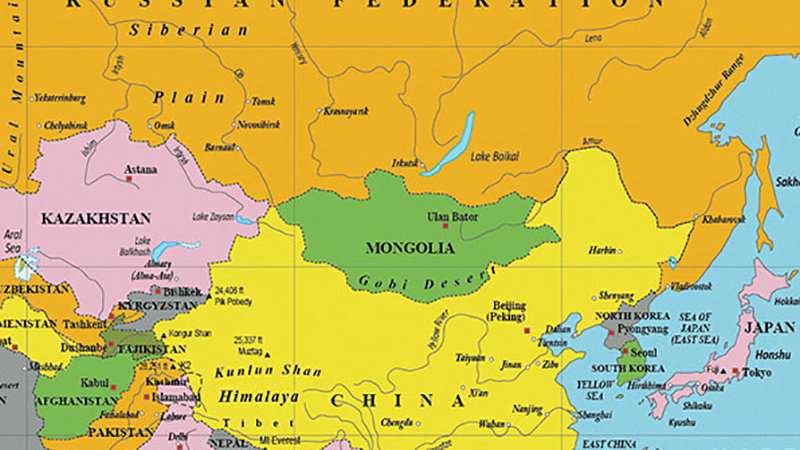
2. Mongolia has more horses than people
It's traditionally said that “a Mongol without a horse is like a bird without the wings”, so it's no surprise that horses play a large part in daily life and culture in Mongolia. An impressive interesting fact about Mongolia is that there are more horses than people here! It is estimated that there are more than 3 million horses in Mongolia while the human population only just hits the 3 million mark..
Horses in Mongolia are used for riding, mare's milk is used for drinking and sometimes they are slaughtered for meat. Nomadic Mongols often herd camels, oxen/yaks, sheep, and goats, but having a herd of horses generally shows that a family is wealthy. The horse played a large role in Gengis Khan's wars, with Mongolian people to this day thought of as great riders.
During the summer festival of Naadam, horse-racing and “trick riding” play a large part in events. Mongols also have spiritual beliefs regarding horses, they believe that a deceased horse's spirit can impact their owner's living herd and that the horse's spirit is housed in a horse's mane – so a long thick mane means a strong horse.
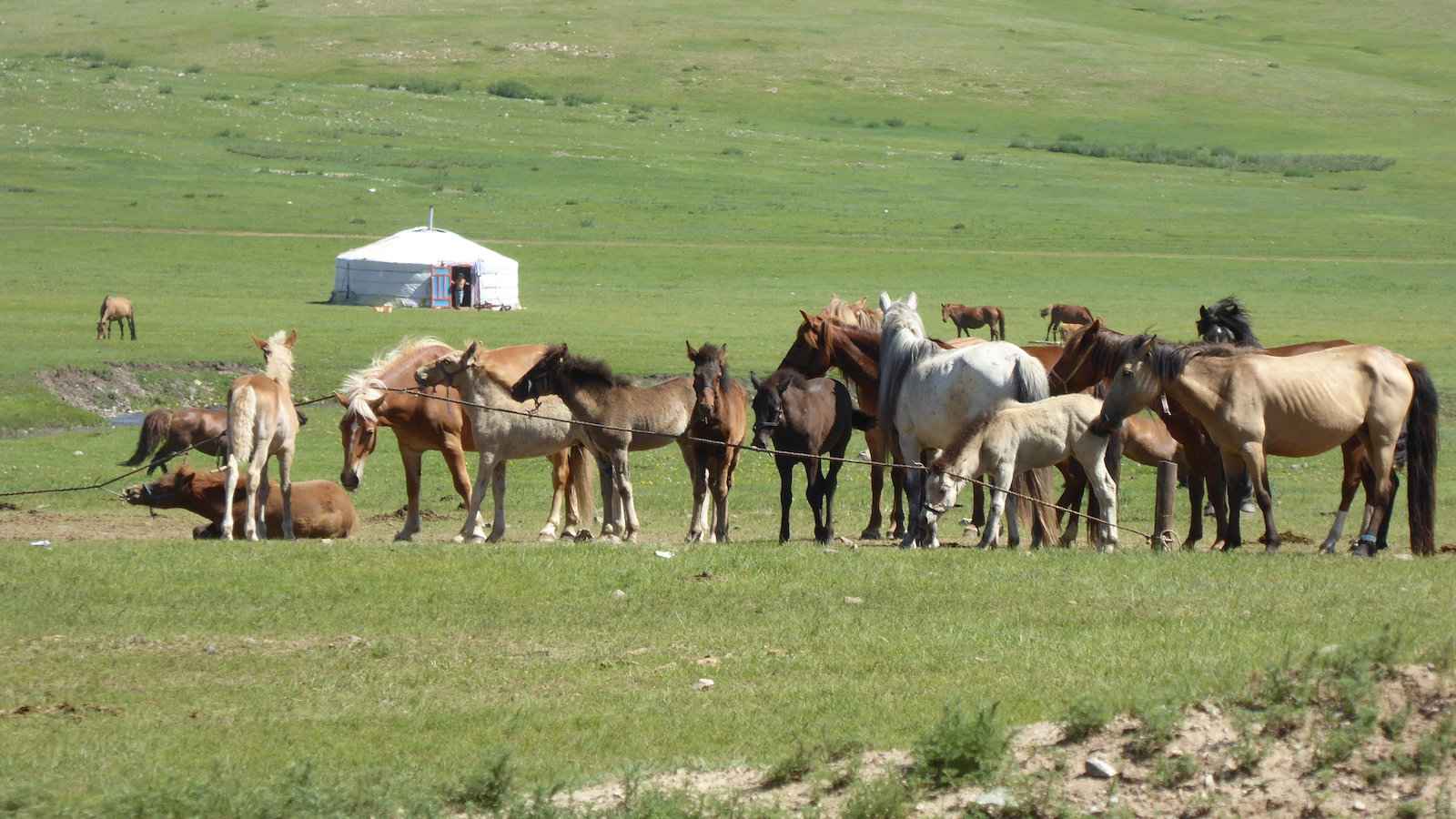
3. Mongols always welcome travelers into their home
Mongolian hospitality is next level. This is one of our favorite unique facts about Mongolia – hospitality is ingrained into the nomadic culture because nomadic Mongols needed to know that they would be welcomed and could find help wherever they go since they live such isolated lives. Westerners visiting Mongolia find this very different, as notions of privacy or private parts of the home don't exist in the communal ger (yurt).
In fact, in Mongolia, it's completely normal to enter a stranger's ger without even knocking because you know you will be welcomed. Mongolian families know that anybody they meet has traveled a long way, so will always make the effort to welcome them, offering food and drink while asking “Sain bainuu” which means “how are you/what is the good news?”
When you visit a Mongolian family you will often be presented with tea or airag along with cheese or biscuits. It's a good idea to also bring gifts to share yourself, especially types of food that aren't readily available on the steppes or useful items like nail clippers.
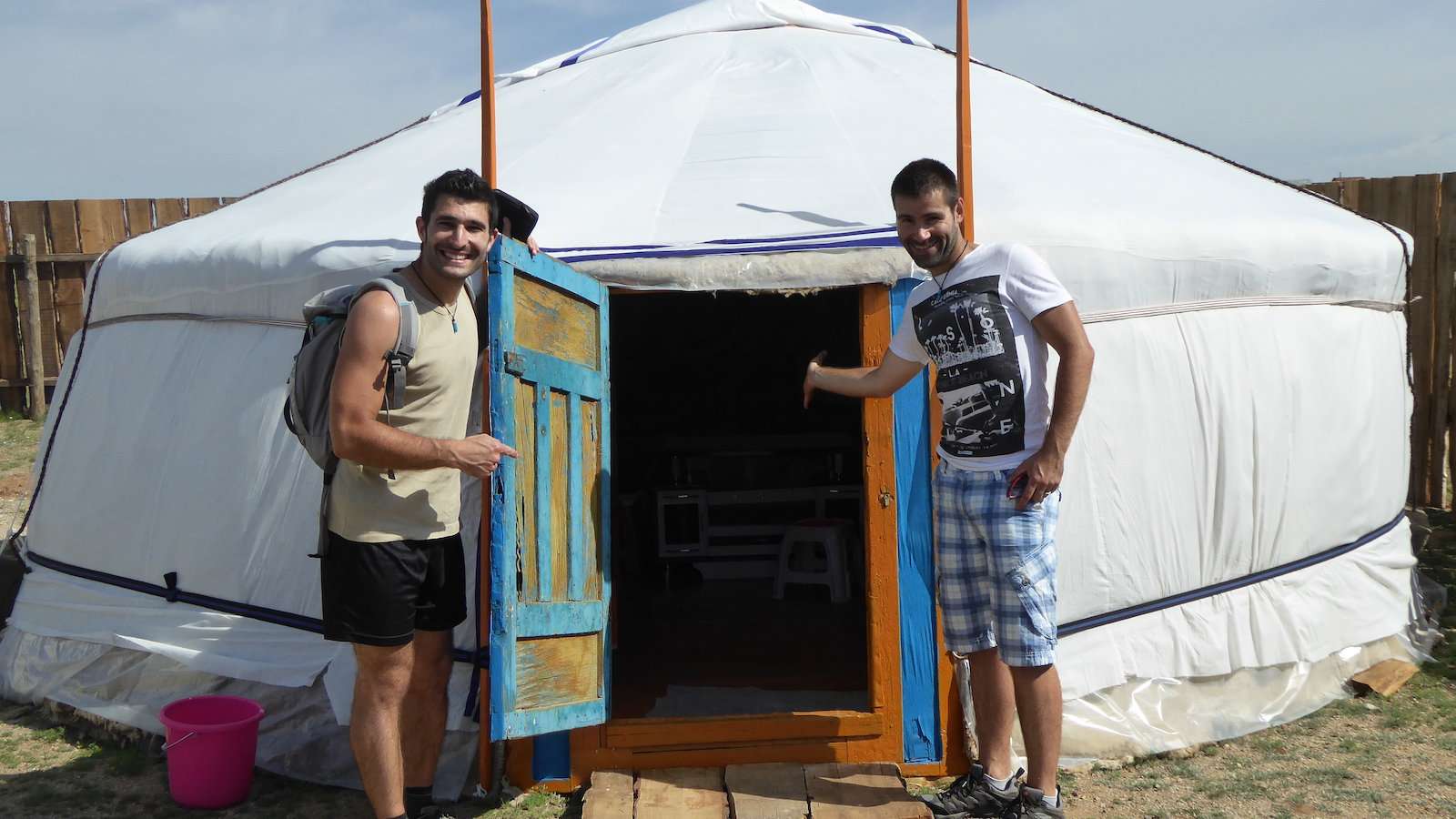
4. The only true wild horse is from Mongolia
A very unique fact about Mongolia is that it has the only true wild horse in the world! Most wild horses, such as the American mustang or Australian brumby, are simply domesticated horses that have turned feral in the wild. The takhi horse from Mongolia is the only wild horse that has never been domesticated and still exists today. Also known as Przewalski's horse, Mongolians call this horse takhi, and it was considered to be extinct in the wild in the late 1960s.
Due to the careful breeding of captive takhis, this native horse was reintroduced to the wild in the 1990s, although it remains an endangered species. They look different to domesticated horses, with a short body, a rather large head, and short manes that stand straight up. Unlike the domesticated horse, which has 64 chromosomes, the takhi has 66 chromosomes, which shows that neither is the ancestor of the other and they evolved independently.
The best place to see takhi horses in the wild is in the Great Gobi B Strictly Protected Area, a biosphere nature reserve where the horses were reintroduced and are continuing to breed.
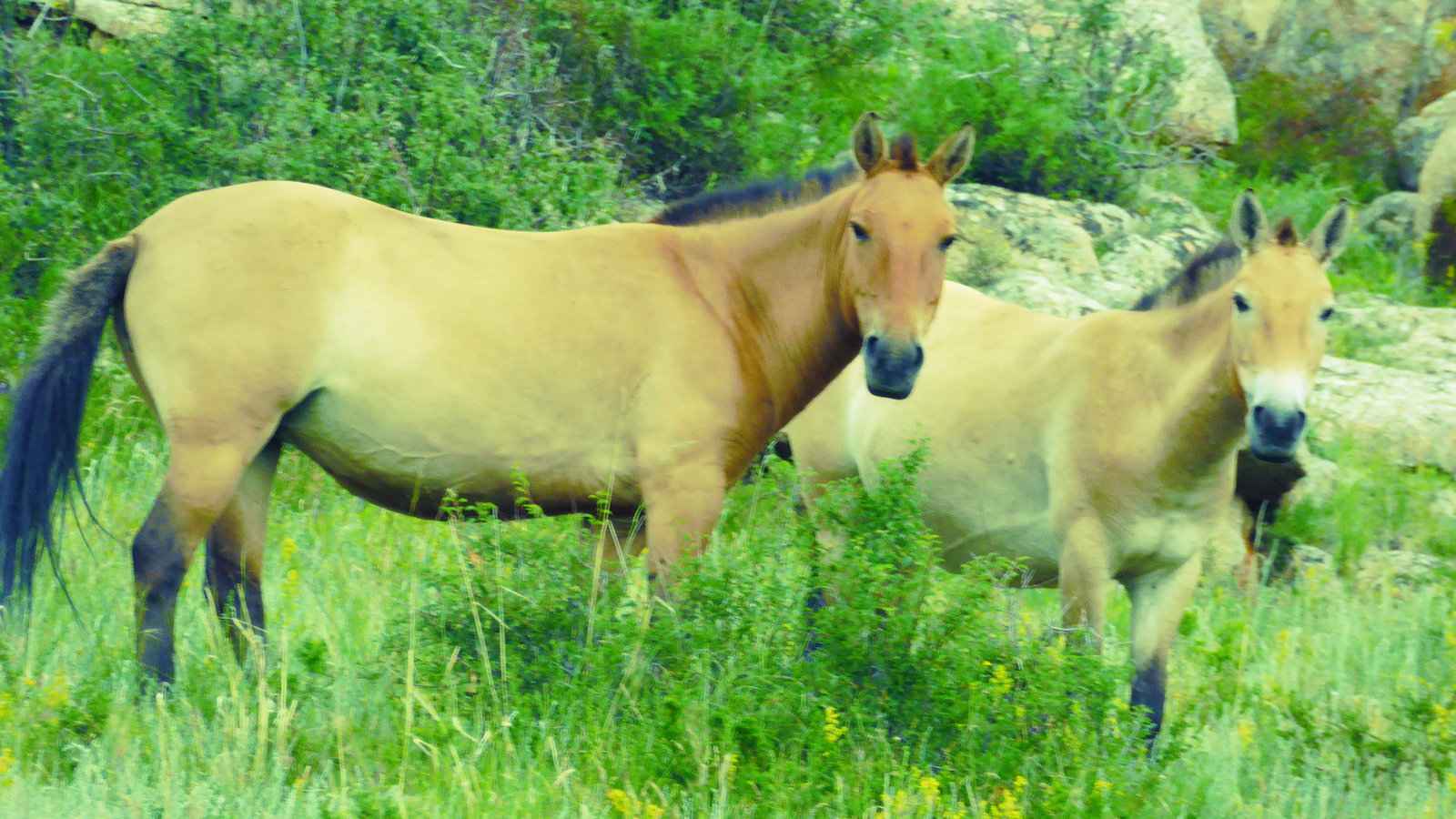
5. The Mongol Empire was the largest in the world
Well, technically it was the largest contiguous land empire in the world (ever) and the only empire that was ever larger was the British Empire, which, of course, had a large navy to help conquer so many places. But during the 13th and 14th centuries, the Mongol Empire stretched 9.27 million square miles from Eastern Europe to the Sea of Japan, including parts of India and the Middle East. This is perhaps the most fascinating of all of our interesting facts about Mongolia.
Genghis Khan and his descendants used armies on horseback to conquer many other countries and while Genghis Khan is well-known as being the founder of the Mongol Empire, it wasn't until after his passing that the empire reached its maximum size.
When conquering new lands the Mongols usually wiped out many of the local population which led to their brutal reputation. The Mongol Empire wasn't all bad though, as Genghis Khan encouraged religious tolerance throughout the empire, and having the Silk Road under one rule made trade easier for all.
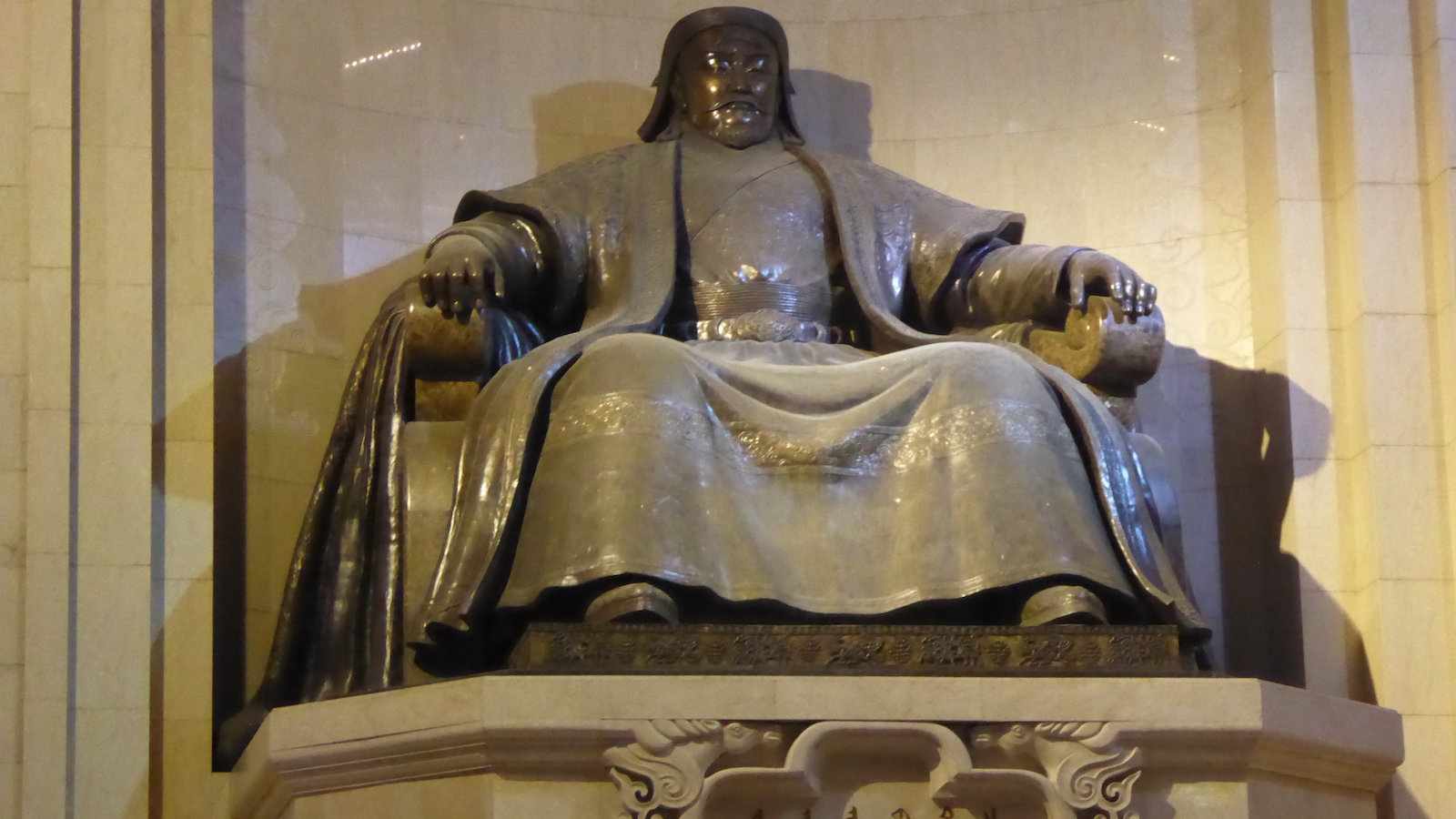
6. Naadam Festival: the Olympic Games of Mongolia
In July each year, the Naadam Festival takes over the entire country. It's like an annual Olympic Games, the purpose of which is to commemorate the 1921 revolution when Mongolia declared itself a free country.
Much like at the Olympics, the opening ceremony in the capital, Ulaanbaatar, is the most popular event, which everyone wants to see. We loved it because it's like watching a showcase of everything representing Mongolian culture, with processions, military parades, and ethnic dances. We were spoilt with so many colors, fabulous outfits, and ethnic singing/dancing. If you're here in July, then this is one legit uber fun fact about Mongolia you do NOT want to be missing out on!
The official Mongolian name for the Naadam Festival is “eriin gurvan naadam” which translates to: “the three games of men”. The 3 games are wrestling, archery, and horse riding. Therefore, the festival centers around these 3 sports.
Sadly, the Naadam Festival is still quite discriminatory towards women. Only recently were women allowed to participate in the horse riding and archery events. Wrestling, however, remains a male-only sport. Interestingly, however, one year a woman sneaked into the competition disguised as a man and won the entire event! To avoid this “deception” happening again, the participants are now officially required to wear an open sleeved top.
7. The Gobi desert is the 5th largest in the world
Out of the ten largest deserts in the world, the Gobi in Mongolia (and China) is the fifth largest at 0.5 million square miles. It's what is classified as a semi-arid desert, meaning temperatures are fierce during summer and frigid during winter. A pretty unique fact about Mongolia we BET you didn't know, right?
Only about 5% of the Gobi is covered by sand dunes, the rest being mostly just bare rock. It is, however, famous for holding the largest reservoir of dinosaur fossils in the world, particularly dinosaur eggs! It was also part of the Silk Road trade route and is home to the Mazaalai, the only species of bear to live in a desert, although they are critically endangered with only about 50 still living in the wild.
If you're out exploring the Gobi Desert and you get disorientated or lost, fear not, look at the direction the gers are facing, and voila! The Mongolian nomads traditionally build their gers so that they face south. This is because it shields their families from the cold northerly winds.
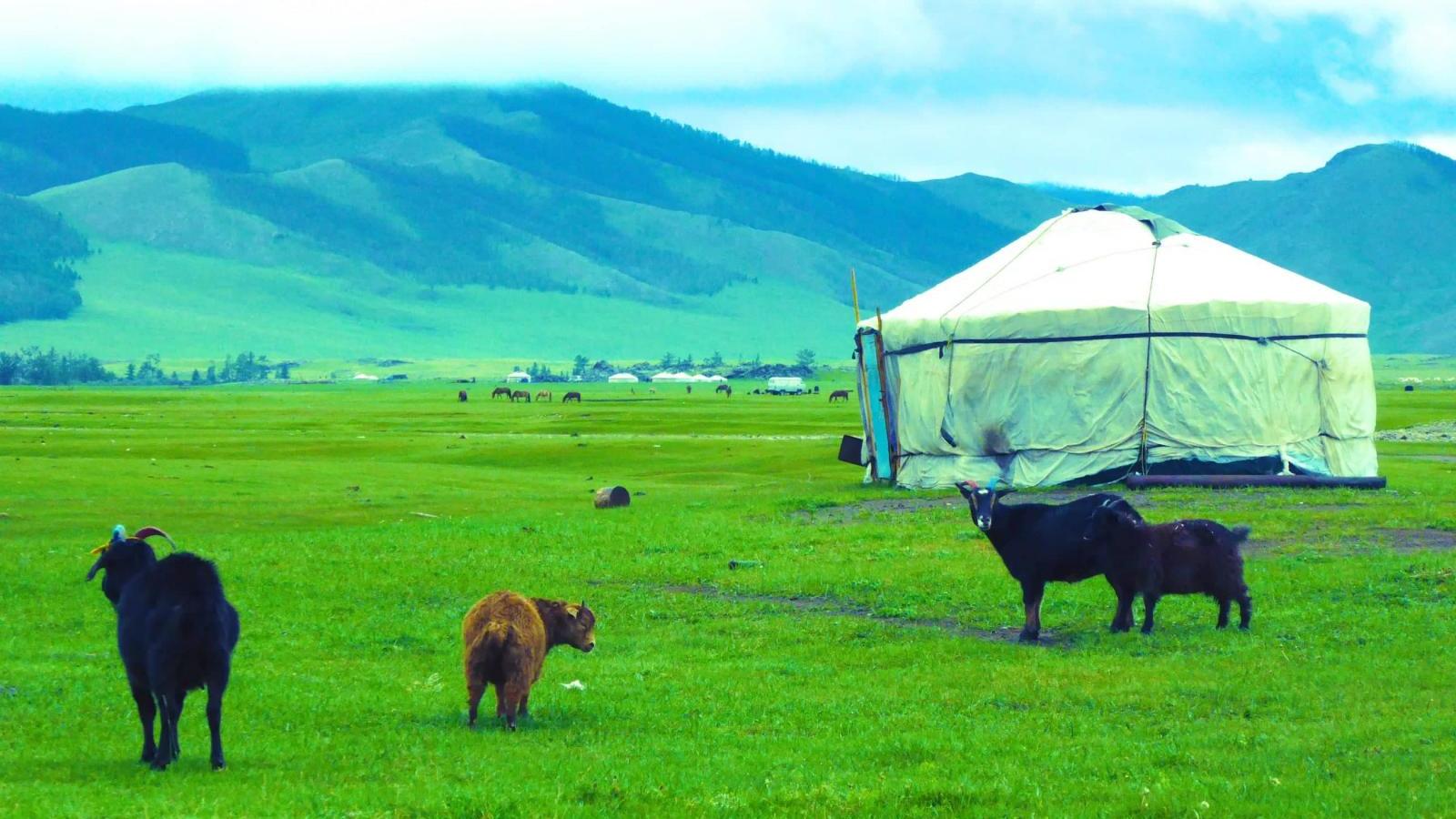
8. Mongols drink fermented horse milk
Airag is one of the most popular drinks that nomadic families drink. It is commonly offered to guests when they enter a ger and it's considered rude to reject it.
Airag for foreigners is, er, interesting…! We've described our experience with the infamous airag in our roundup of the best traditional Mongolia foods…needless to say, it's one of the more quirky and unique facts about Mongolia you should try at least once in your life!
Traditionally, nomadic families keep a large amount of wildlife around their gers, including horses, camels, goats, and more. The milk produced by the mare is stored and left to ferment until it becomes what is known as airag. It's very popular amongst pastoral nomadic families, who drink large quantities of it throughout the day. For us, the taste left a lot to be desired… but try it for yourself before judging.
Mare's milk is also spiritually important to the Mongols, often used during religious ceremonies, sprinkled on the ground to ensure victory before a battle, or sprinkled on the horse to celebrate victory after a race. Taking a sip of airag or throwing some in the air is also common as a blessing or celebration of something.
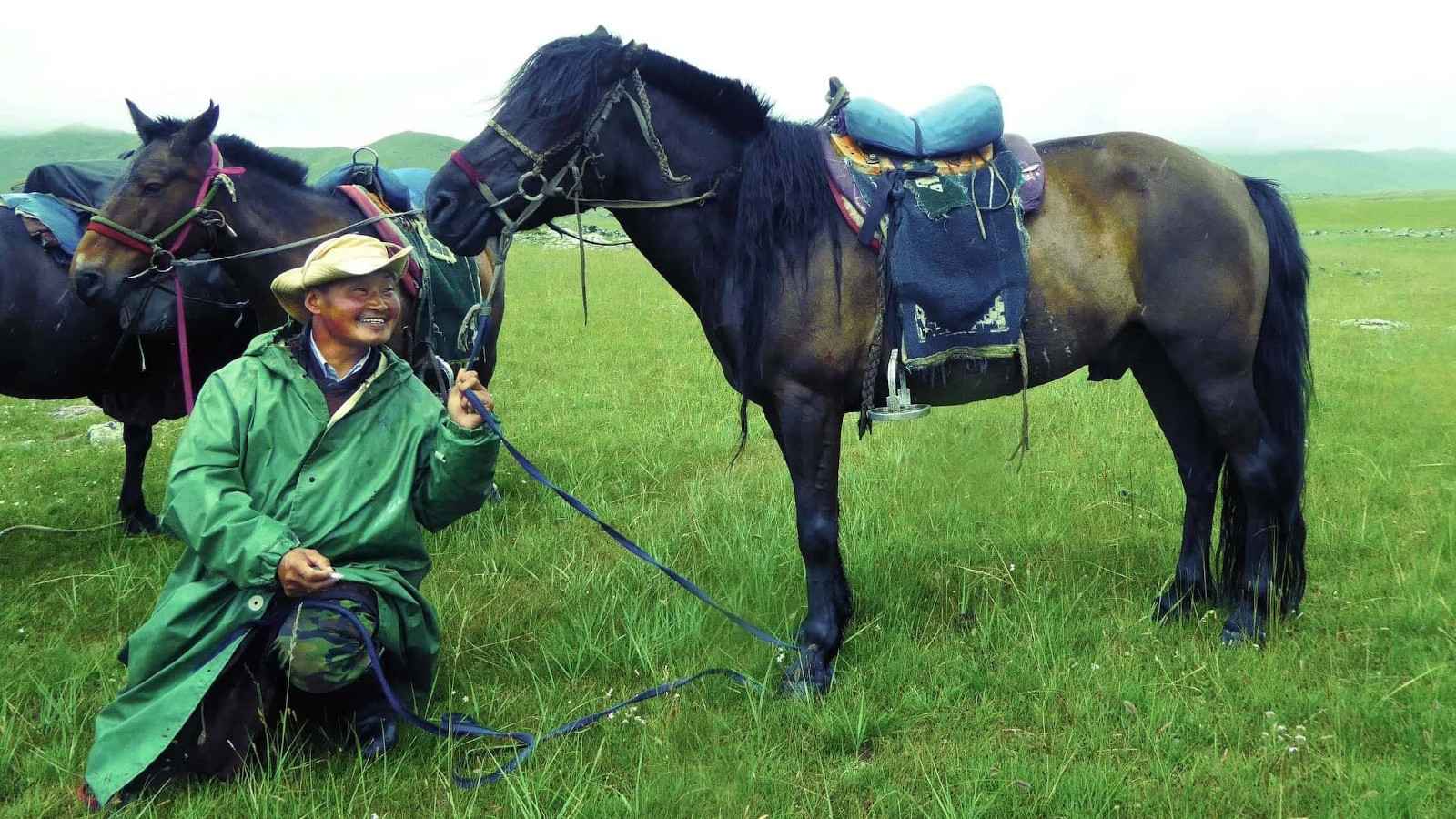
9. Mongolia is the land of the eternal blue sky
Since much of Mongolia is covered by desert and steppe, which mostly consists of wide open plains, the sky dominates a lot of the landscape. The country is often called “Land of the Eternal Blue Sky” because it receives more than 250 sunny days a year. That's one pretty poetic unique fact about Mongolia we totally fell in love with!
The name “Land of the Eternal Blue Sky” doesn't just mean that there's usually nice clear weather though. The Mongols traditionally practiced ancestral shamanism and worshipped the Eternal Blue Sky (also known as the sky-god Tenger or Tengri) along with other forces of nature. The Eternal Blue Sky was the most powerful of all these forces and particularly important to Ghengis Khan.
Of course, the stunning landscapes of rolling steppes or sand dunes, coupled with wide-open blue sky, certainly make for impressive and quintessential photos of Mongolia. Sometimes it even looks like you're on another planet entirely, like below!
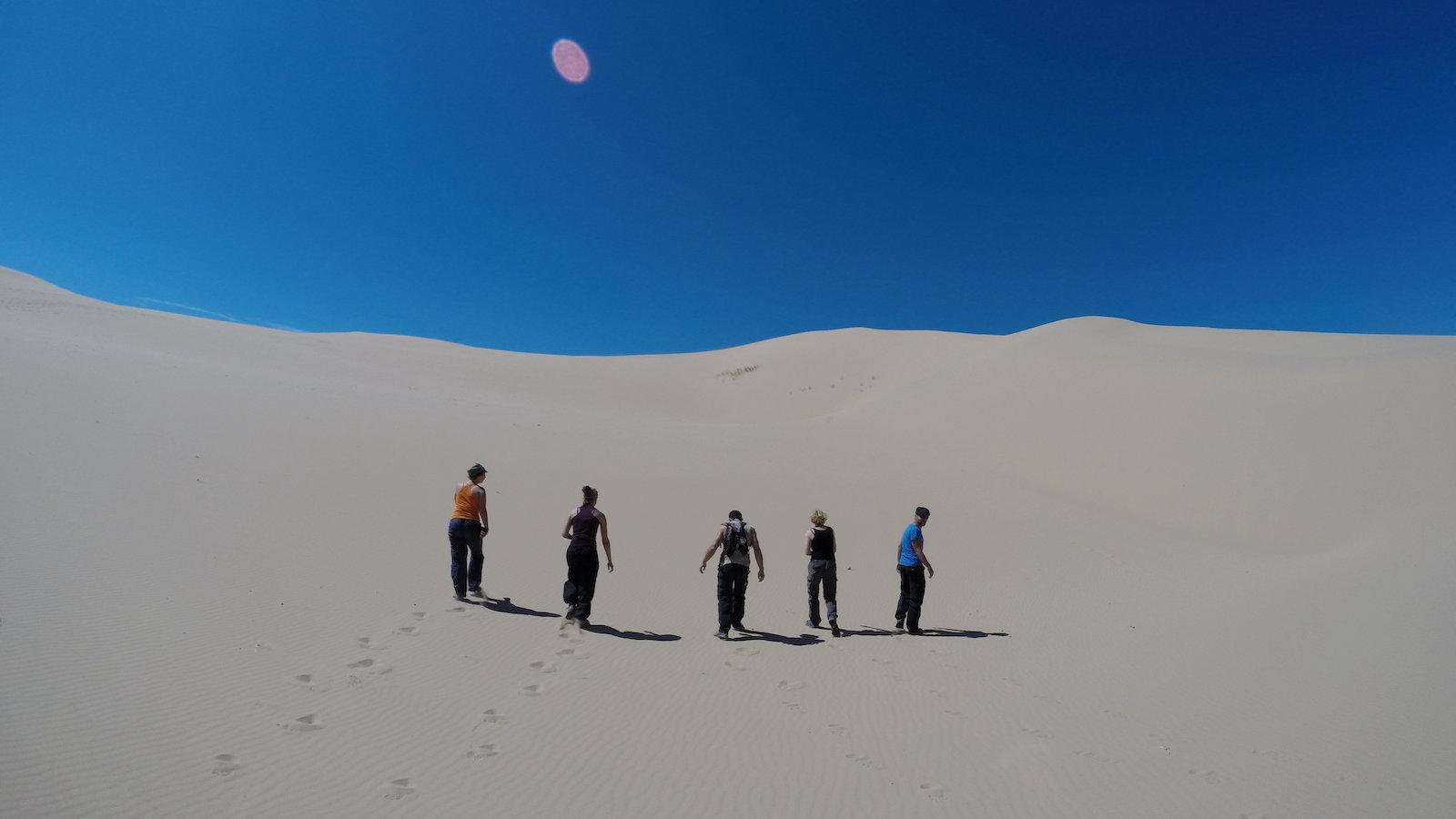
10. Mongols sing with their throat…
…yep that's right! This is a very fun fact about Mongolia – Khoomei (also known as Tuvan throat-singing) is a traditional singing style practiced by people in Tuva, Mongolia, and Siberia. Watching a throat singer performing is quite spellbinding and extraordinary.
Mongolian throat singing involves the performer producing a fundamental pitch and at the same time one or more pitches over that. It might sound easy but once you hear some you wonder how they do it! It's so remarkable that it became UNESCO listed in 2009.
We met Mongolian throat singer, Enkh Jargal Dandarvaanchig (aka “Epi”) at the Rainforest World Music Festival in Kuching who tried to teach Seby Mongolian throat singing with some success (see below). You can also lookup The HU, a Mongolian folk-rock band who has helped bring Mongolian throat-singing to the world, even providing a track for the video game “Star Wars Jedi: Fallen Order”.
11. Ulaanbaatar is one of the most polluted capitals in the world
As a result of the influx of nomadic families to Ulaanbaatar over the past decade, pollution and smog levels have massively increased across the capital city. To give you an idea, the total population of Mongolia is just over 3 million. Almost half of the country, around 1.38 million, lives in Ulaanbaatar. Time Magazine famously nicknamed Ulaanbaatar the world's most polluted capital city.
The main reason for the increased levels of pollution is the coal-powered stoves used by the nomadic families in their gers. The smog gets particularly strong during the cold winter months when temperatures in Ulaanbaatar drop to a high of -10 degrees Celsius and a low of -25 degrees Celsius at night.
As a result of the increased smog levels, in 2012, the Mongolian government implemented a new law requiring drivers to alternate the days they are permitted to drive into the city center. The weekday you're allowed to drive depends on the last number your car license plate ends with:
- Mondays: cars ending with 1 and 6 are not allowed to enter the city center
- Tuesdays: cars ending with 2 and 7 are not allowed to enter the city center
- Wednesdays: cars ending with 3 and 8 are not allowed to enter the city center
- Thursdays: cars ending with 4 and 9 are not allowed to enter the city center
- Fridays: cars ending with 5 and 0 are not allowed to enter the city center
If caught entering when you shouldn't, the penalty is a fine of 80,000 tugriks (around $32). Although this doesn't seem like much to us, it's a hefty fine in a city where the average net monthly salary is less than $325. A pretty impressive fun fact about Mongolia to help work through our Climate Crisis eh?
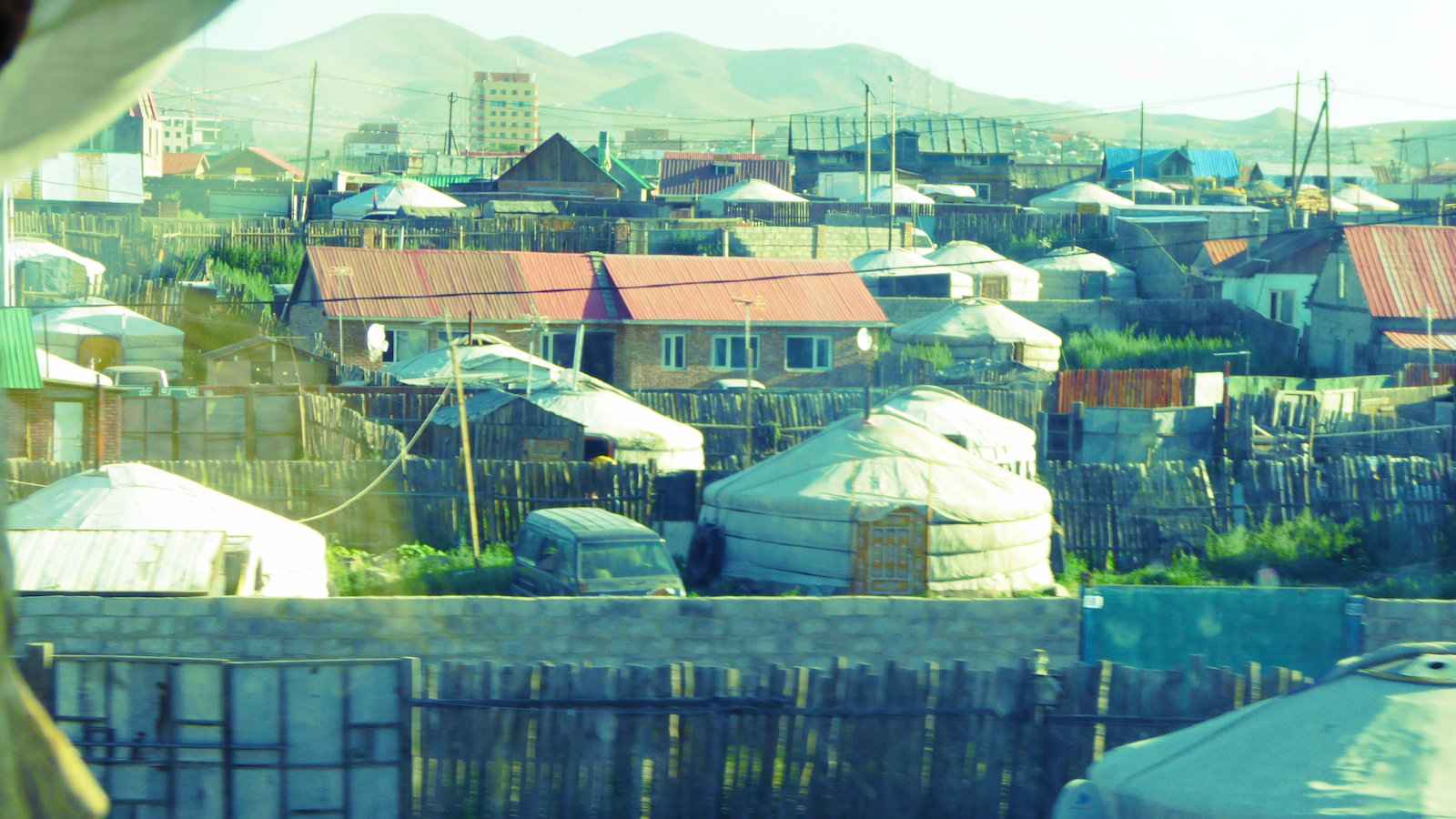
12. Mongolia is the biggest consumer of sheep in the world
Vegetarians look away… because, in Mongolia, the cuisine mainly consists of dairy products, meat, and animal fats! The most common rural dish is cooked mutton, ubiquitous across the entire country. In fact, Mongolia is reported to eat the most sheep and goat meat per capita out of any country in the world! Not gonna lie – a pretty horrific interesting fact about Mongolia if you're a vegan or vegetarian!
Fruits and vegetables are usually imported and not really a major part of the diet. Their cuisine is, after all, designed for the extreme weather conditions they have to withstand in the cold winter months, and since many Mongolians are nomadic, farming isn't a big thing.
During our trip, we cannot recall a Mongolian meal that didn't come with mutton! For us, the meat is ok, but we're less keen on the mutton fat which is usually mixed with it. For Mongolians, the mutton fat is the best part, and never thrown away. The best way to wash it down? With a swig of airag of course!
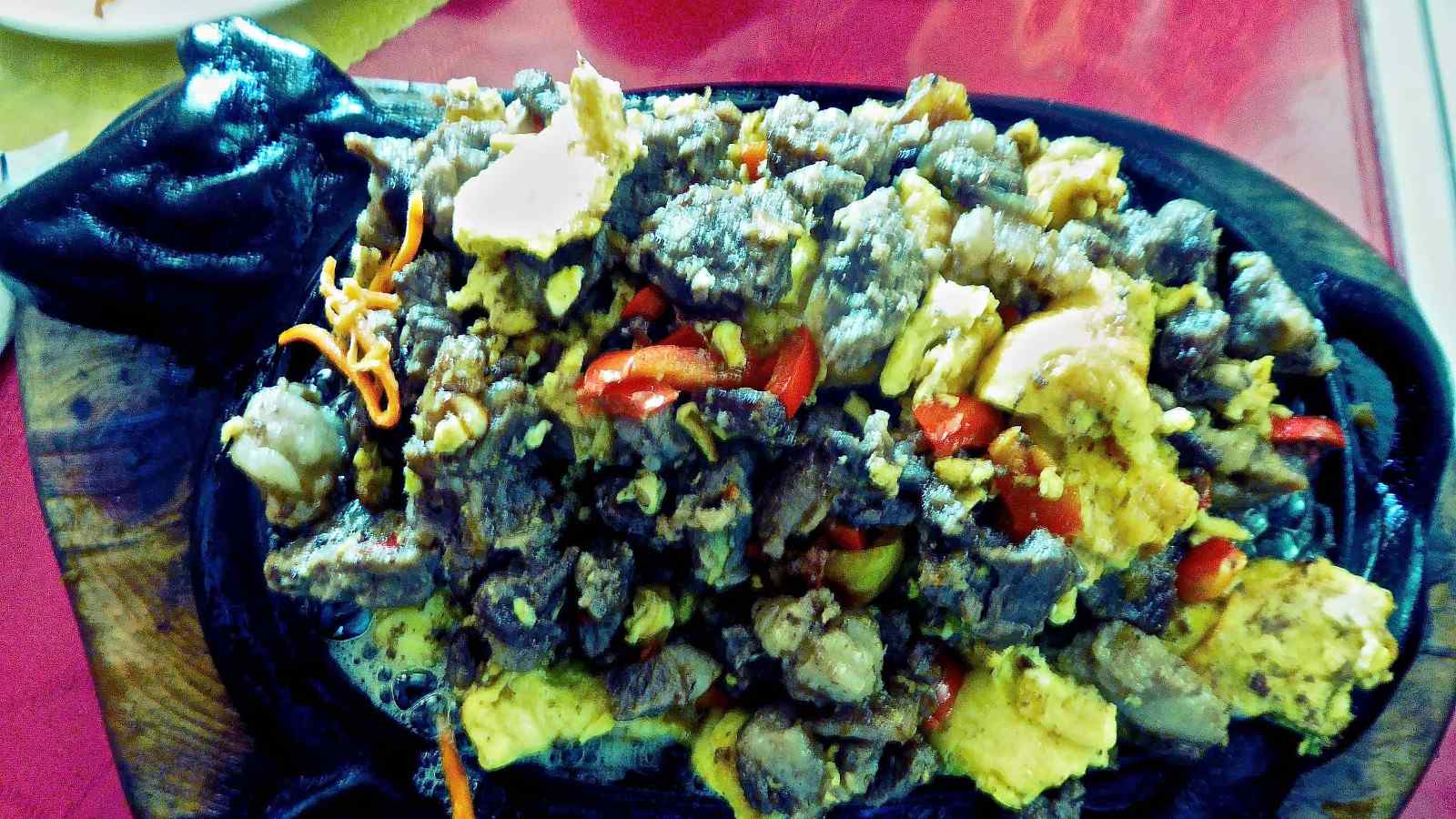
13. Mongolia's currency has no coins
This is a very unique fact about Mongolia that currency collecting geeks like Stefan will appreciate. The Mongolian currency does not have any coins! Everything is made up of paper notes and the currency is officially called the Mongolian tugrik or tögrög.
To give you an idea of exchange rates, $1 converts to around 2,500 tugriks. The highest value note available is a 20,000 tugrik note (worth around $8) and they work downwards from there.
Genghis Khan appears on the higher value notes (20,000, 10,000, 5,000, 1,000 and 500). General Sukhbaatar (who declared Mongolia an independent country from China in 1921) appears on the lower denominations.
Here's your Mongolian mission: try to find a 1 tugrik note! After a lot of searching we managed to find one for Stefan's currency collection, which he proudly shows off to anyone who'll listen:
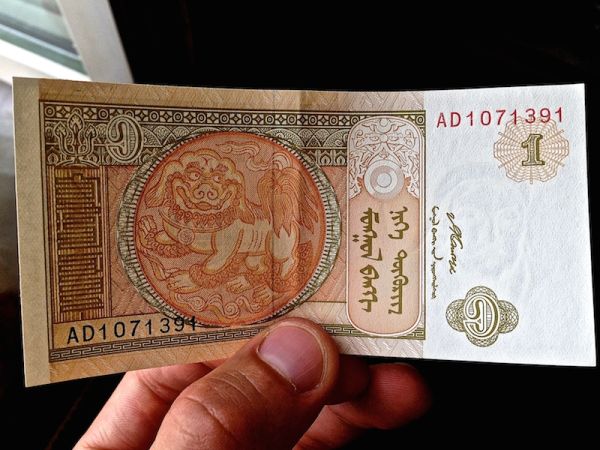
14. Tsagaan Suvraga is one of the most unique landscapes in the world
Tsagaan Suvraga (meaning “white stupa”) is one of the many impressive landscapes we saw in Mongolia. We absolutely fell in love with this scenery and rate it as one of the best unique facts about Mongolia which you need to see! It is made up of several rocky formations within a dried-up seabed. Over thousands of years of wind and rain, it has formed something resembling what you'd imagine the surface of planet Mars to look like.
The Tsagaan Suvraga rocky formations have different colored layers, mainly brown/red, which is what gives them that otherworldly feeling. They are also quite large: around 60 meters (197 feet) high and 400 meters (1,313 feet) long.
It's quite a long drive to reach the Tsagaan Suvraga, so ideally it's best done as part of a Gobi Desert Tour, which is offered by most agencies in Ulaanbaatar.
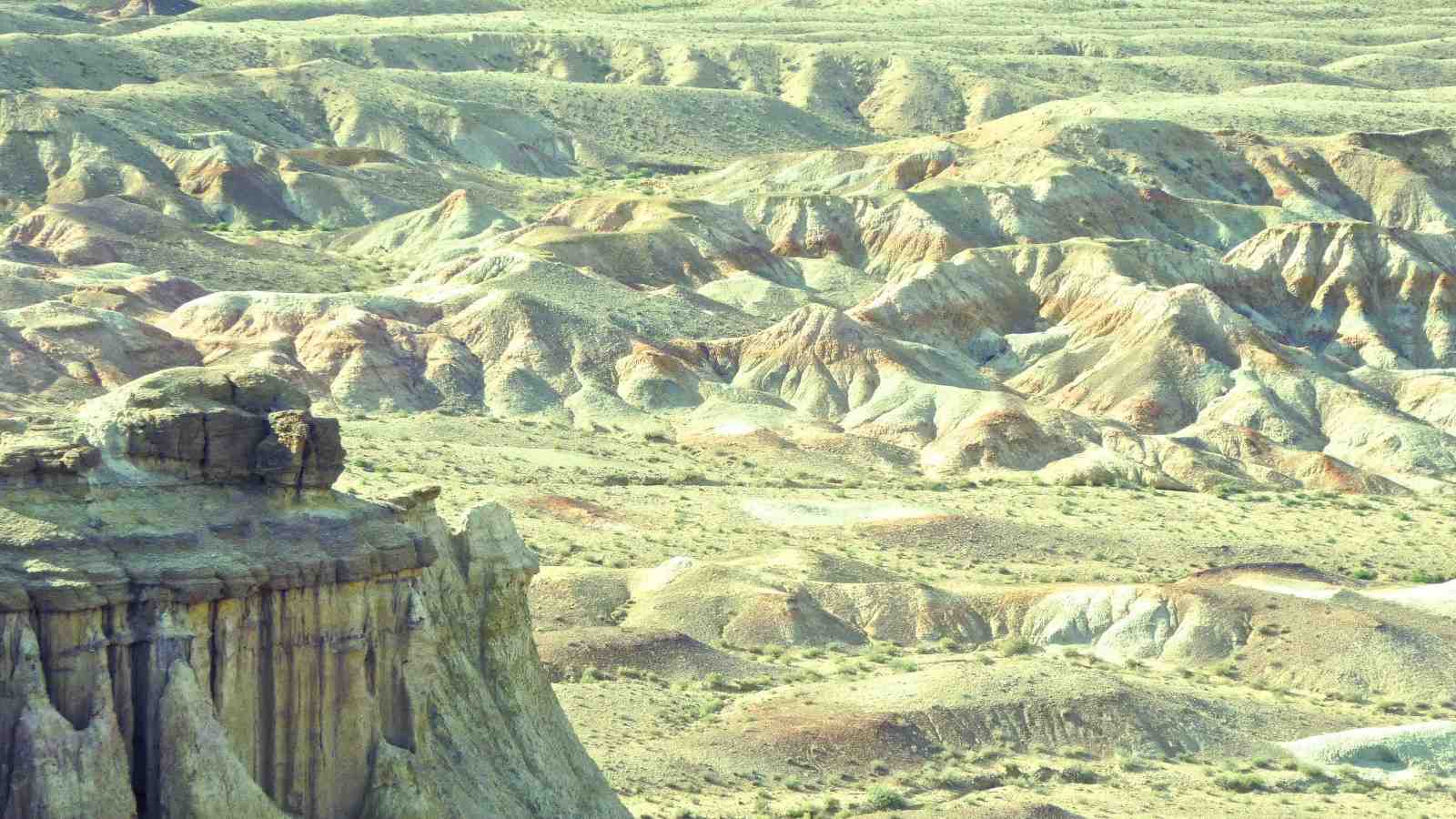
15. Mongolia has only one gay bar
During our time in Ulaanbaatar, we stumbled upon the only gay bar in the entire country. We were quite shocked at first. When we first came to Mongolia, we didn't expect there to be much/any gay scene at all. Well, it turns out we were wrong!
We met the owner, Zorig, who told us about gay life in Mongolia and the efforts he has taken over the past few decades to set up a gay bar in Ulaanbaatar. The main obstruction was corrupt landlords and surprisingly, the LGBTQ community itself, who at first were too scared to come out of the closet to visit the bar.
Whilst Mongolia still has a long way to go with regards to its LGBTQ rights, progress is swiftly being made with Ulaanbaatar Pride now a fixture in Mongolia's annual calendar! We loved exploring Mongolia as a gay couple and certainly didn't experience any antipathy from locals. Now that's one unique interesting fact about Mongolia that all fellow LGBTQ travelers can get on board with rightaway!
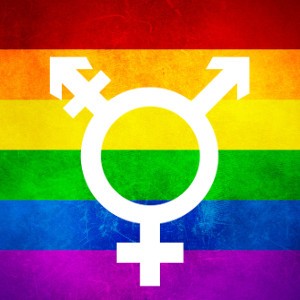
Advice for LGBTQ travelers to Mongolia
Mongolia does not have the best LGBTQ reputation in the world, but by Asian standards, it's not bad. It's not illegal to be gay here, but it is lacking when it comes to LGBTQ-friendly laws. Whilst the situation is hard for LGBTQ locals, for gay travelers, we found Mongolians treated us with respect and were very welcoming. We never experienced problems booking double beds in hotels or guesthouses in the capital – Ulaanbaatar. However, when staying with nomadic families in the Gobi Desert, we were only offered single beds – as were all travelers, whether straight or gay.
Watch more from our Mongolia adventures in travel video:
For more inspiration:
- Read more about traveling to Mongolia on the Trans-Siberian Railway
- After Mongolia, we headed to Beijing and the Forbidden City
- For further adventures, head to one of these most gay-friendly countries in Asia
- One of these countries we love is Japan, make sure you check out our Japan itinerary for first-time visitors
- As well as our gay city guide to Tokyo
- Find out why India is surprisingly safe for gay travelers
Like this post? Pin it
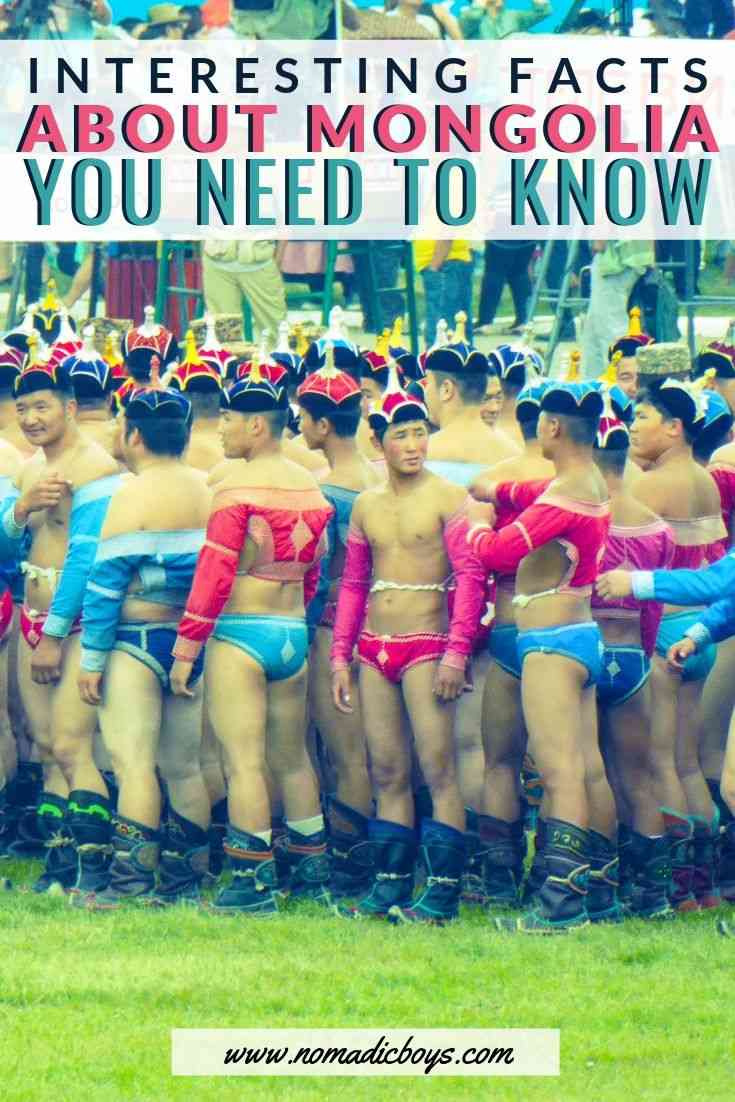

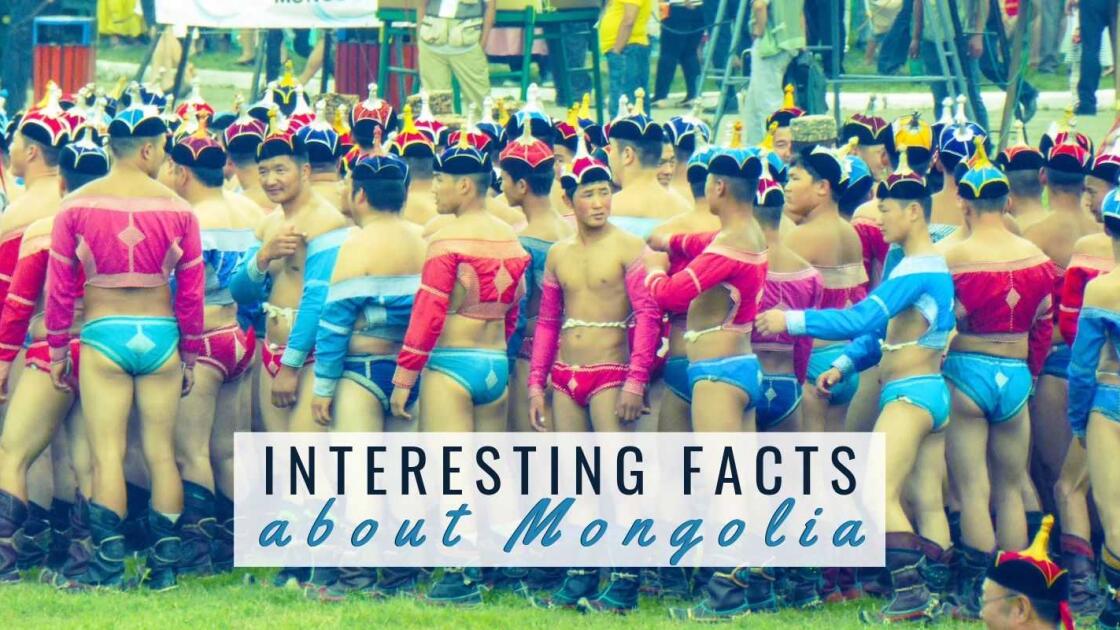

MICHAEL
Thursday 4th of May 2017
I liked discovering some things on here that I haven't discovered on the other few blogs on Mongolia I've found! It's making my upcoming trip there even more exciting.
Nomadic boys
Thursday 4th of May 2017
Thanks
Melody
Sunday 5th of June 2016
Your choice of the term "black market" is a little off, I'd say it's more of a bazaar rather than a black market as it has negative connotations to it. But overall awesome facts :D
Nomadic boys
Sunday 5th of June 2016
LOL quite right - it's more of a bazaar, but in Mongolian, it's name is in fact Khar Zakh, which translates to Black Market :)
roamingpursuits
Wednesday 10th of June 2015
Interesting and insightful post on Mongolia. I especially liked the photos with the '3D graffiti'.
Angelica Craig
Monday 15th of September 2014
Great photos! I'm going to Mongolia soon, just want to ask where did you take the photos of district gers in UB? Where is the best spot to take pictures of district gers? Thanks!
Nomadic boys
Monday 15th of September 2014
Hi Angelica, thanks for your comment. We took it from our van on the way back into UB from our Gobi Desert tour, so not really sure where exactly.
Claire
Saturday 16th of August 2014
Ha ha love the selection of pics of the guys airing their bellies!
Nomadic boys
Sunday 17th of August 2014
Thanks Claire :)